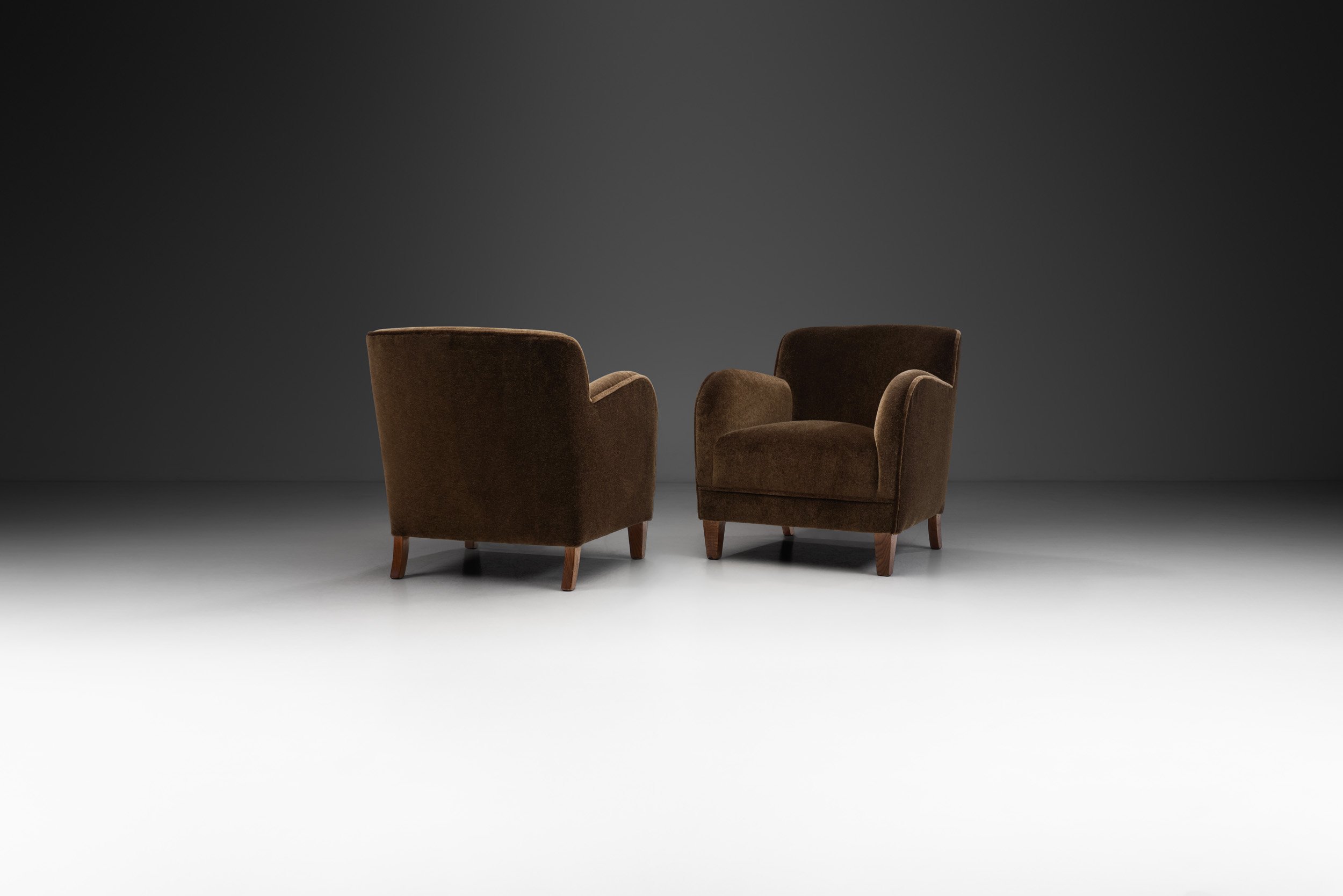Traditional Norwegian Carved Kubbestol Pair, Norway early 20th century (sold)






























Traditional Norwegian Carved Kubbestol Pair, Norway early 20th century (sold)
In Norway, cube chairs have been in use since the Middle Ages, and in the 18th and 19th centuries, cube chairs were mostly used in the farming communities in Eastern and Southern Norway.
Kubbestol or cube chair is traditionally carved out of a single block of wood. To reduce tensions in the material and prevent cracking, the block is usually hollowed out in the middle before the material is dried. These chairs showcase this with unique hatches and under seat storage. Like many other Norwegian furniture types, the cube chair also has roots far beyond the country's borders. The look is most likely influenced by South European chairs of the same shape, carved in stone or made in bronze or clay. Such chairs are known from around 900 to 700 years before the birth of Christ. However, in Norway this type of chair has only been made of wooden blocks. In the case of these chairs, the tree trunks were hollowed out while the backs of the chairs continue upward from the seats in a curved shield shape that makes the chairs both snug and comfortable. Most likely these chairs were made traditionally, roughly hewn while the material was raw. While the logs are seemingly roughly shaped, the seating comfort is surprisingly high, as functionality has been historically important for Scandinavian furniture makers. The kubbestol was often placed next to the open-hearth fireplace or next to the bed, and it was reserved for the head of the household. The elemental organicity is evident through the cracks and decades old patina, creating a look that is just as coveted nowadays as Axel Einar Hjorth’s minimalistic pieces.
These days the kubbestol has become a symbol of Scandinavian roots for many families with ties to Norway, Sweden, or Denmark. A reminder of our rural heritage and a time when most things in and around the home were made by hand from materials found in nature.
SOLD
Condition:
In good vintage condition. Wear consistent with age and use. The chairs have cracks and marks.
Dimensions:
26.77 in W x 22.04 in D x 25.19 in H; Seat height 18.11 in
68 cm W x 56 cm D x 94 cm H; Seat height 46 cm
Second Chair
23.03 in W x 26.37 in D x 37.79 in H; Seat height 18.3
58.5 cm W x 67 cm D x 96 cm H; Seat height 46.5 cm
About the Design:
The earliest records of the kubbestol/kubbstol in Scandinavia are in the form of small silver amulets: one from a burial site on the island of Björkö to the west of Stockholm, which dates to the 9th century, and two found amongst a collection of money and jewellery unearthed at Fölhagen on the Swedish island of Gotland and dated to the 10th century.
Whereby it is important to remember that a representation of a kubbstol created in 9th and/or 10th century Sweden shouldn’t be confused with the physical existence of the kubbstol in 9th and/or 10th century Sweden. That while it strongly implies, they almost certainly were physically in existence in Sweden; they alone confirm that kubbstolar were known in Sweden, and presumably had an importance and significance. Why else use them as amulets, and as amulets crafted from precious, valuable, materials? In 1916 Bernhard Salin noted that “due to lack of time and space, I have to refrain from considering the interesting question of why the kubbstol during the Viking Age was made in the form of a pendant.”
Exactly what that significance is and was, other than, potentially, a simple symbol of the power of Odin and/or Frigg, we know not. As with all items of vernacular furniture the search for origins invariably leads one to supposition and fantasy, rather than your actual facts. However, the kubbstol became a symbol of Scandinavian history and culture, with a unique appearance and craftsmanship that contains history just like a book. ~H.










